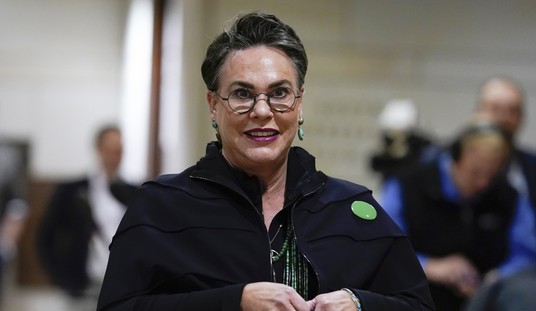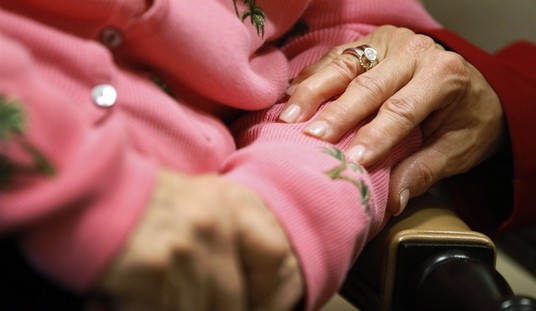In part two of this ongoing RedState series, we look at how the 2018 (and 2017) elections shape up to determine who will control the United States Senate in the years to come.

Sen. Ted Cruz, R-Texas, and other senators, gather for final votes on Capitol Hill in Washington, Thursday, Aug. 3, 2017. After the GOP health care bill collapsed last week due to opposition within Republican ranks, the Senate worked in rapid succession this week as the chamber confirmed a new FBI director, sent President Donald Trump a key veterans health bill, and cleared a batch of lower profile nominations that have been bottled up by Democrats. (AP Photo/J. Scott Applewhite)
Up for election this year and next are the Senate Class I seats, along with any special elections to fill vacancies. Currently the only vacancy to be filled in a special election is the Alabama seat vacated by Jeff Sessions.
Class I is interesting in that the Democrats won big the last two times this class was up. As a result, the Democrats have nearly maxed out the seats up right now:

Of the 34 seats up, 25 are de facto held by the Democrats (we’re not going to pretend Angus King and Bernie Sanders are truly independent), and 9 are held by Republicans (including the Alabama seat). That is ridiculous. Given the lack of gerrymandering in the Senate, there’s no way it should slant that far. The Democrats have been very lucky in Class I, but their luck may have run out this cycle.
Let’s do the math. The seats not up break 43 R-23 D, meaning the Republicans just need 7 for the majority (thanks to the Vice President’s tiebreak), while Democrats need 28 seats for 51 votes.
Now, of the seats up, most are unlikely to change parties. The safe seats include: Alabama (Sessions / Strange), California (Feinstein), Connecticut (Murphy), Delaware (Carper), Hawaii (Hirono), Maryland (Cardin), Massachusetts (Warren), Minnesota (Klobuchar), Mississippi (Wicker), Nebraska (Fischer), New Mexico (Heinrich), New York (Gillibrand), Rhode Island (Whitehouse), Tennessee (Corker), Texas (Cruz), Utah (Hatch), Vermont (Sanders), Washington (Cantwell), and Wyoming (Barrasso). That’s 19 seats unlikely to change hands, breaking 12 D, 7 R.
What that means is that just with the safe Republican seats holding (Alabama, Mississippi, Nebraska, Tennessee, Texas, Utah, and Wyoming), Republicans effectively start holding the majority. That’s right, Democrats must run the table, plus win one of those Republican held states, in order to take the majority.
But alright, forget the majority. What if they just want to gain seats, in order to take back the majority in 2020? Let’s look at the remaining seats, and how much the parties won them by last time:
Arizona: Jeff Flake (R) won with 49-46 last time to replace Jon Kyl, and he’s under severe primary pressure this time. This seat is losable by the Republican nominee.
Florida: Bill Nelson (D) won 55-42, but the 75 year old has to run in a state that leans Republican. If the Republicans get a good nominee in there, he could lose.
Indiana: Joe Donnelly (D) won 50-44 as the establishment and the Libertarians ganged up on RedState favorite Richard Mourdock, but with the Republican party turning anti-conservative, that conflict may not be relevant this time. Donnelly is one of the most vulnerable incumbents and might not even be a favorite to win re-election.
Michigan: Debbie Stabenow (D) won 59-39, but that was before Trump managed to win the state. A candidate (such as Robert “Kid Rock” Ritchie) who can tap into the same sentiments might find a way to win.
Missouri: Claire McCaskill (D) won 55-39 after Todd Akin shot his own candidacy in the face, and Republicans were trolled by Public Policy Polling enough to keep him from pulling out. She’s unlikely to get that lucky again. She can win in the state, but she’s beatable.
Montana: Jon Tester (D) squeaked by 49-45 in the rural state, and this year being an midterm might alone be enough to knock off the incumbent.
Nevada: Dean Heller (R) won his special election 46-45 in a state that has been highly competitive lately. The choice between Heller and primary opponent (and perennial loser) Danny Tarkanian may not give Republicans much hope of keeping the state.
New Jersey Bob Menendez (D) won 59-39, and Governor Christie is destroying the party’s reputation in the state, but Menendez himself is on trial. That often hurts a candidate.
North Dakota: The state leans heavily Republican, but Heidi Heitkamp (D) won 50-49. In a midterm she should be beatable.
Ohio: Sherrod Brown (D) beat the young Josh Mandel 51-45. Once again, if the establishment actually backs the Republican, maybe the party can win this time.
Pennsylvania: Bob Casey Jr. (D) won 54-45, and should probably win re-election, but as in Michigan, the Trump factor suggests nothing’s out of reach.
Virginia: Tim Kaine (D) beat George Allen 53-47. It’s a swingy state, and if Republican can unite, they can win. But the Trump wing of the party is pouting right now, and may hand the Democrats the Governor’s race this year.
West Virginia: Joe Manchin (D) is popular, but his party is not popular in West Virginia. Not popular at all. He’s in a spot much like Mark Kirk was in Illinois in 2016.
Wisconsin: Tammy Baldwin (D) only won 51-46, and as with Michigan and Pennsylvania, the Trump factor puts the state more in doubt than ever before. The right candidate the midterm election turnout could knock her off.
In conclusion, with 11 Democrats and 2 Republicans in the battleground, it’s somewhere between improbable and impossible for Democrats to gain seats in this election. Republicans are capable of fumbling this one away, but I really doubt it.
In fact, if they can win that battleground 8-5 (possible, but unlikely given that some of the seats are very marginal for them), Republicans could take a filibuster-proof majority in the Senate. That would be a historic outcome in a midterm with their own party in the White House, but two consecutive Class I waves for Democrats have managed to put that in the realm of possibility.













Join the conversation as a VIP Member